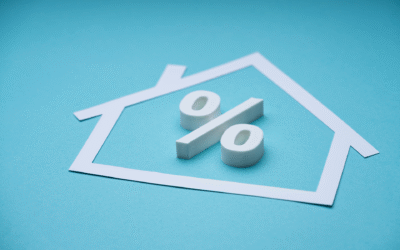The latest Halifax house price index has reported a monthly increase of +0.3% with an annual change of +3.2%. Although it states the quarterly change is -0.1%.
Amanda Byrden, Head of Mortgages at the Halifax said:
“We know the stamp duty changes prompted a surge in transactions in the early part of this year, as buyers rushed to beat the tax-rise deadline. However, this didn’t lead to a significant increase in property prices, with the last six months characterised by a stability in prices rarely seen since the pandemic. While the market has cooled slightly since this rush, buyer activity remains strong in comparison to recent years.
The latest Nationwide report wasn’t as positive for home owners. It stated that annual house price growth had slowed slightly in April.
Robert Gardner, Nationwide’s Chief Economist said:
“April saw a slowing in UK house price growth to 3.4%, from 3.9% in March. House prices fell by 0.6% month on month, after taking account of seasonal effects.
“The softening in house price growth was to be expected, given the changes to stamp duty at the start of the month. Early indications suggest there was a significant jump in transactions in March, with buyers bringing forward their purchases to avoid additional tax obligations.
The latest Hometrack House Price Index Report stated that house price inflation had slowed since demand had cooled and supply had expanded.
It was more conservative in its annual growth at +1.6%.
Richard Donnell, Executive Director of Research said:
“Buyer demand has cooled in recent weeks as the supply of homes for sale continues to expand, slowing house price inflation. We expect continued growth in sales agreed, and slow but steady house price inflation”
The latest Rightmove Report that focuses on house prices stated that prices had risen by +0.6%.
Colleen Babcock, property expert at Rightmove said:
“It’s another new price record this month, but having seen a May price record for the last five years, it appears to be driven more by seasonal factors given that new buyer demand has slowed. The ten-year high choice of homes for sale means that sellers need to be aware of the level of competition they’re facing for the attention of buyers, and the prices that are being advertised in their location
She went on to say:
“Despite April’s dip in new buyer demand, there are early signs of a bounce-back in May. Mortgage interest rates are lower than they were at this time last year, and the recent Bank Rate cut also gives us some optimism for further mortgage rate drops that will enable more to buy. While we’re not expecting drastic reductions, any lowering of rates will be a boost to buyer sentiment and affordability.”
Our Thoughts
We have seen good levels of activity since the beginning of April which is encouraging given the stamp duty changes.
Some reports have said that supply is currently outweighing demand, essentially suggesting a buyers market.
While the data might support this, we have seen numerous occasions where clients have been up against other offers, ultimately being out bid or ending up in a ‘best and final’ situation.
This coupled with lower mortgage rates could mean continued and stable growth for house prices over the next 12 months.




